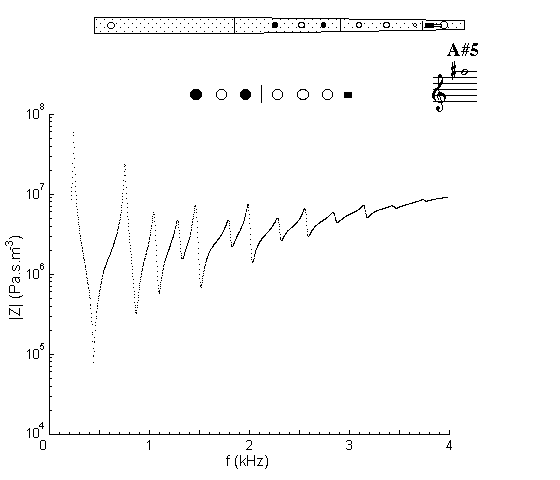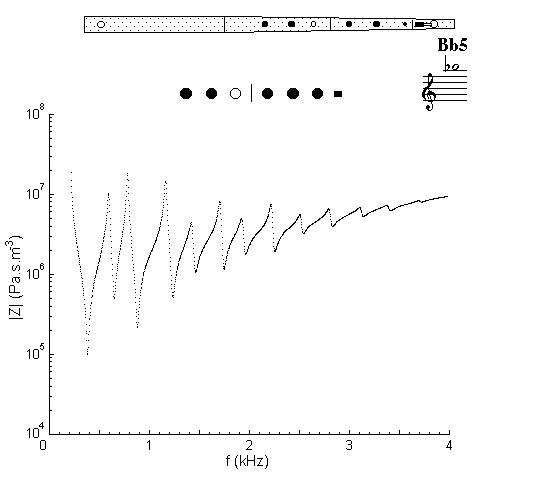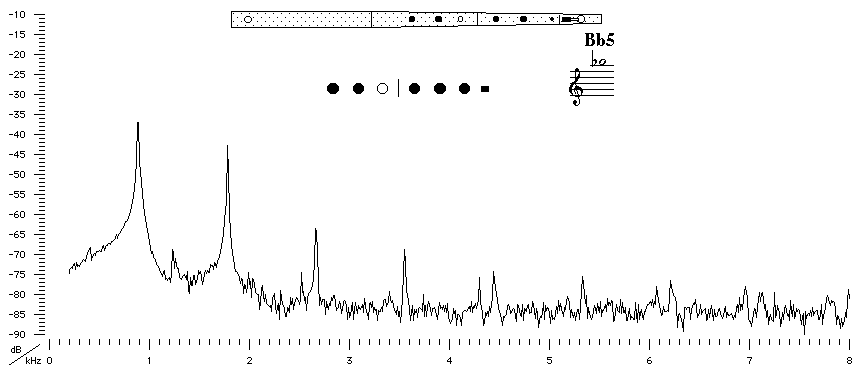| Acoustics of baroque, classical and modern flutes |
baroque flute |
A#5 & Bb5 |

|
Acoustic and Fingering Schematic Non-specialist introduction
to acoustic impedance |
This is a cross fingering: a hole is closed below one open. Both first and second minima are flattened below their values in the B4/5 fingering: the second (used to play A#5) by a semitone, and the first less so. For more detail on cross fingering see that section in the introduction to flute acoustics, or download a brief scientific report on cross fingerings.

Sound spectrum
of a baroque flute played using fingering for A#5.
![]()
![]()
![]()
![]() You can hear A#5
played by Matthew Ridley.
You can hear A#5
played by Matthew Ridley.
Bb5 Fingering |
baroque flute |
 |
Acoustic and Fingering Schematic Non-specialist introduction
to acoustic impedance |
Impedance spectrum of a baroque flute measured at the embouchure hole using fingering for Bb5.
This fingering can, in this context, be considered as like that for Eb4 but with a register hole approximately two thirds of the way along the effective length, thereby facilitating the third harmonic of Eb4, while rendering Eb4 impossible. See register holes in our introduction to flute acoustics. (This fingering also plays Ab4, in which context it is considered as a cross fingering.)

Sound spectrum
of a baroque flute played using fingering for Bb5.
![]()
![]()
![]()
![]() You can hear Bb5 played by Matthew Ridley.
You can hear Bb5 played by Matthew Ridley.
| Acoustic measurements are available for these flutes - modern B, modern C, classical C, classical D, classical flared, baroque Sound clips are available for modern B, classical flared and baroque |
To compare flutes, it is easiest to open a separate browser window for each instrument. |